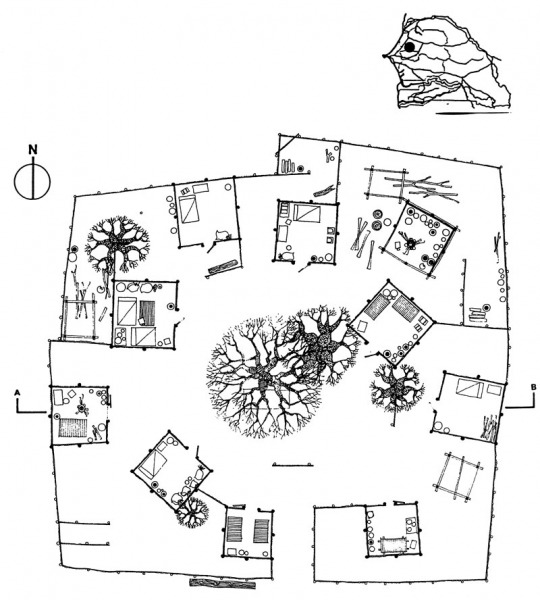image: Hollmén-Reuter-Sandman Architects | © all rights reserved
#GC2022 is accepting submissions - 25d 27h 05m 44s
The women's centre, built in a suburb of Rufisque, offers facilities for the activities of the various organisations formed by the women. The idea and the spatial programme of the centre were born in cooperation with local women's groups. The building was carried out as an NGO project through 'Tekniska Föreningen i Finland', and was financed by the Finnish Foreign Ministry, the Senegalese-Finnish Association ARC, as well as by scholarships received from various foundations. The plot was donated by the city of Rufisque and donations were also given by locals.

The general African way of women organising themselves in organisations, with the number of members ranging from tens to hundreds, also occurs in Senegal. An active and strong women's group attempts to ease its members' everyday life amidst poverty and strives to guarantee them a reasonable 'social security'. The schooling level is raised by independent initiative and literacy courses. The organisations supplement their incomes by selling home-made food and needlework. Also they help women to adapt to the change in life in moving to the city from the countryside. Their activities have an organised structure, which means a step forward from the traditional social network created by family and friends.
The building frame is a column and beam structure cast on site, with the walls made from concrete blocks cast in a mould and dried on site. The roof is corrugated metal sheeting supported by a steel beam system, with thick woven straw matting forming an insulating ceiling structure; the spacing between is ventilated, which guarantees that the indoor air is kept pleasantly cool. Localness and recycling is emphasised in the material choices; for instance, the use of wood is limited to only those places where it could not be replaced by any other material; and in detailing, for instance, old car wheel rims have been used as ventilation holes and the bottoms of old glass bottles for windows. The reinforcement irons in the concrete have been made from recycled iron.
We wanted to apply ecological and local solutions in the construction work, and for a long while we studied, among other features, opportunities to use stabilized mud bricks. But there was no suitable type of clay for this purpose in the nearby region, and since Sococim, the largest cement factory of Western Africa is in the outskirts of the city , cement is accordingly a local material. This issue was ultimately solved by the fact that Sococim donated all the necessary cement for the project.